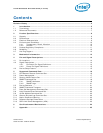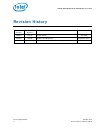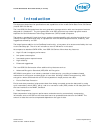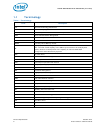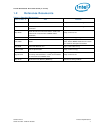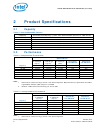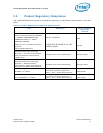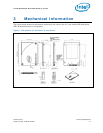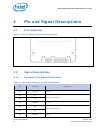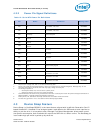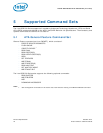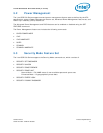
Intel® Solid-State Drive 530 Series (2.5-inch)
Product Specification October 2013
10 Order Number: 329212-003US
2.4 Environmental Conditions
2.4.1 Temperature, Shock, Vibration
Table 8: Temperature, Shock, Vibration
Electrical Characteristics Range
Case Temperature
Operating
1
Non-operating
2
0º C - 70º C
-55º C - 95º C
Temperature Gradient
3
Operating
Non-operating
30 (TYP) ºC/hr
30 (TYP) ºC/hr
Humidity
Operating
Non-operating
5 – 95 %
5 – 95 %
Shock and Vibration Range
Shock
4
Operating
Non-operating
1,500 G (Max) at 0.5 msec
1,500 G (Max) at 0.5 msec
Vibration
5
Operating
Non-operating
2.17 GRMS (5-700 Hz) Max
3.13 GRMS (5-800 Hz) Max
Note:
1. As measured by temperature sensor, SMART Attribute BEh. Active airflow is recommended within the
system for maintaining proper device operating temperature on heavier workloads.
2. Please contact your Intel representative for details on the non-operating temperature range.
3. Temperature gradient measured without condensation.
4. Shock specifications assume the SSD is mounted securely with the input vibration applied to the drive-
mounting screws. Stimulus may be applied in the X, Y or Z axis. Shock specification is measured using
peak acceleration and pulse width value.
5. Vibration specifications assume the SSD is mounted securely with the input vibration applied to the
drive-mounting screws. Stimulus may be applied in the X, Y or Z axis. Vibration specification is
measured using G Root Mean Squared (GRMS) value.
2.4.2 Altitude
The drive is not sensitive to changes in atmospheric pressure because it has no moving parts. Drive
tested under non-operational conditions to pressures representative of -1 K and +40 K feet.




